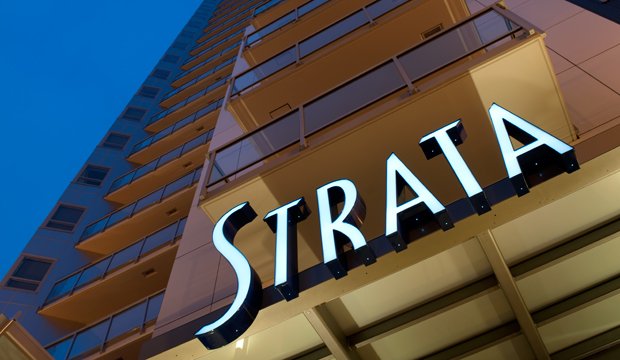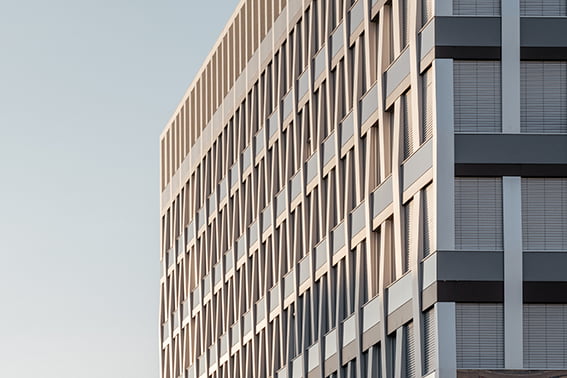May Newsletter 2023
STRATA INSIGHTS
In the May edition of our newsletter, we bring you the latest information on the strata sector in Australia, showcasing recent case studies, industry updates and top tips.
What does the 2-year limitation period to bring action against an Owners Corporation mean?
There is a two-year limitation period under Section 106(6) of the Strata Schemes Management Act, 2015 (NSW)(SSMA) where an owner may bring an action against an owners corporation for loss or damage suffered by the owner for breach of the owners corporation’s statutory duty to repair and maintain the common property within two (2) years of the owner “first becoming aware of the loss”.
The meaning of this section was interpreted by the Court of Appeal in a decision handed down on 6th March 2023: The Owners – Strata Plan No 74232 v Tezel [2023] NSWCA 35.
Ms Tezel was the owner of a residential apartment in Bondi Beach. In 2013, every time it rained heavily, she noticed water ingress into her unit. She proceeded to replace the carpet in that year and stopped living there on a permanent basis because of the “water, smell and discomfort”. In 2016, she decided to rent out the unit but was unable to do so. The unit remained was unoccupied since 2016.
In November 2020, Tezel commenced proceedings in the NSW Civil and Administrative Tribunal (Tribunal) against The Owners – Strata Plan No 74232 (Owners Corporation) seeking remediation work orders and loss of rent from 6 November 2018. Tezel did not seek to recover loss for the entire period for which the unit was unoccupied, dating back to 2016. At first instance, the Tribunal made orders for remediation and rectification works but dismissed Tezel’s claim for loss of rent, because, in the Tribunal’s view, Tezel first became aware of the rental loss in 2016, therefore her claim was time barred by s 106(6) of the SSMA.
In the Court of Appeal it was contended that the Appeal Panel erred in its construction of the term ‘loss’ in s 106(6) of the SSMA as referring to the loss occasioned only when an ongoing breach ceases, such that her claim for rental loss was not time barred.
The Court of Appeal held that Tezel’s claim was out of time because the two-year period in which she could bring an action under s 106(6) commences from when she first became aware of the loss of rent, being 2016. The Court of Appeal considered that the purpose of the two-year time period was to prevent a lot owner from delaying proceedings in circumstances where the people having to make good the loss are also lot owners and the passage of time may affect their ability, through the owners corporation, to recover that loss from other persons.
This decision confirms that the two-year limitation period for lot owners to bring proceedings starts from the date the lot owner ‘first becomes aware of the loss’.
Lot owners are therefore cautioned to act promptly to commence proceedings when dealing with losses that might arise from an owners corporation’s failure to maintain and repair the common property.
Watch our Live Webinar
Premium Strata and LookUpStrata had a live Webinar on by-law breaches, demonstrating who may enforce them and a step by step guide on how to execute them
This session conveyed who needs to comply with by-laws and why it is crucial for owners corporation to enforce them. Watch it below
Mould in Property – Who is Responsible?
Background
In NSW, mould is a common issue throughout the winter. Condensation can occur by operating an air conditioner on heat while the doors and windows are closed, which can result in the growth of mould. This problem is brought on by variables including moisture and inadequate ventilation.
Causes
Mould commonly develops indoors on walls, ceilings and bathroom tiles, where there is little ventilation.
Implications
Rain can also contribute to the increased mould growth and cause health issues for owners and tenants as they’re more likely to stay indoors during the winter season.
When mould settles on surfaces, it destroys building materials as well.
Recommendations
Exhaust fans should be switched on, especially when cooking, showering, doing laundry or drying clothes.
To avoid the likelihood of mould in your building, it is important to ensure that there is adequate ventilation.
Who is at fault?
Ultimately who is liable for this issue depends on where the mould is and what caused it, which could be difficult to determine.
The owner’s corporation is responsible for any water issues that arise from common property. In most cases, the owner is accountable with mould issues, however in certain instances the tenant may be responsible for paying damages if the landlord can demonstrate that it was caused by the tenant’s negligence of not using exhaust fans for instance.
If mould is found outside of these lines, the owners corporation may be liable for any necessary repairs and mould removal expenses. The lot owner is liable for any necessary repairs and expenses if the mould’s origin is located within these restrictions.
Please contact your Strata Manager to start a conversation with your strata committee. Alternatively, if you have further questions feel free to reach us via info@premiumstrata.com.au
Can the 2-year limitation period be extended by NCAT?
In a different case, Hua Nan Trading Pty Ltd v The Owners – Strata Plan No 32396 [2023] NSWCATAP 66, a lot owner, Hua Nan, also alleged that it sustained loss and damage to its lot on 7, 8 and 9 February 2020 because of inclement weather and the alleged breach by the owners corporation’s statutory duties to maintain and repair common property.
The Owner sought orders for damages and to inspect certain records of the owners corporation. The application by Hua Nan was not accepted as compulsory mediation pursuant to section 227 of the Strata Schemes Management Act 2015 (NSW) (SSMA) had not been undertaken. On 22 April 2022, a mediation between the parties was conducted by NSW Fair Trading. The mediation was unsuccessful.
On 28 April 2022, Hua Nan commenced its second proceedings in NCAT against the Owners Corporation seeking the same orders as it had sought in the First Proceedings (Second Proceedings). The appellant said it provided to NCAT evidence of the earlier mediation at the time of commencing those proceedings. The Owners Corporation argued that the Second Proceedings were brought beyond the prescribed two year limitation period, as stipulated in section 106(6) of the SSMA.
On appeal, the Appeal Panel interpreted section 41 of the NCAT Act as superseding any conflicting provisions present in NCAT Act that confers general jurisdiction upon NCAT, dismissing NCAT’s restrictive interpretation of section 41 of the NCAT Act. The Appeal Panel also held that their interpretation does not provide carte blanche to delinquent owners to sit on their rights. Once the two-year period has elapsed such owners would need to convince the Tribunal that time should be extended.
That is, NCAT said, section 41 only applied where legislation provided for the doing of something, and s 106(6) SSMA did not state a time for the doing of anything. In other words “it is a matter of statutory interpretation whether one provision can extend a time period set out in another”.
Hua Nan was therefore successful in its appeal, the Court of Appeal determining that the Tribunal did have power to extend the time for the appellant to bring his proceedings for damages.
Note: The information here was gathered from Project Lawyers. Visit their website for more information.
Events
In May, our CEO Leanne Habib, attended the Gold Dinner at Town hall
This fundraising event raised close to $20 Million and more than 500 guests gathered to support Sydney Children’s Hospital Foundation and the Children’s Hospital at Westmead Kids Complex Care Centre
We’re very honoured to be a part of such a great cause through this campaign. Huge thank you to Sydney Children’s Hospital Foundation and Scape for organising such an amazing evening








